Aldosterone antagonists in addition to renin angiotensin system antagonists for preventing the progression of chronic kidney disease
- PMID: 33107592
- PMCID: PMC8094274
- DOI: 10.1002/14651858.CD007004.pub4
Aldosterone antagonists in addition to renin angiotensin system antagonists for preventing the progression of chronic kidney disease
Abstract
Background: Treatment with angiotensin-converting enzyme inhibitors (ACEi) and angiotensin receptor blockers (ARB) is used to reduce proteinuria and retard the progression of chronic kidney disease (CKD). However, resolution of proteinuria may be incomplete with these therapies and the addition of an aldosterone antagonist may be added to further prevent progression of CKD. This is an update of a Cochrane review first published in 2009 and updated in 2014.
Objectives: To evaluate the effects of aldosterone antagonists (selective (eplerenone), non-selective (spironolactone or canrenone), or non-steroidal mineralocorticoid antagonists (finerenone)) in adults who have CKD with proteinuria (nephrotic and non-nephrotic range) on: patient-centred endpoints including kidney failure (previously know as end-stage kidney disease (ESKD)), major cardiovascular events, and death (any cause); kidney function (proteinuria, estimated glomerular filtration rate (eGFR), and doubling of serum creatinine); blood pressure; and adverse events (including hyperkalaemia, acute kidney injury, and gynaecomastia).
Search methods: We searched the Cochrane Kidney and Transplant Register of Studies up to 13 January 2020 through contact with the Information Specialist using search terms relevant to this review. Studies in the Register are identified through searches of CENTRAL, MEDLINE, and EMBASE, conference proceedings, the International Clinical Trials Register (ICTRP) Search Portal, and ClinicalTrials.gov.
Selection criteria: We included randomised controlled trials (RCTs) and quasi-RCTs that compared aldosterone antagonists in combination with ACEi or ARB (or both) to other anti-hypertensive strategies or placebo in participants with proteinuric CKD.
Data collection and analysis: Two authors independently assessed study quality and extracted data. Data were summarised using random effects meta-analysis. We expressed summary treatment estimates as a risk ratio (RR) for dichotomous outcomes and mean difference (MD) for continuous outcomes, or standardised mean difference (SMD) when different scales were used together with their 95% confidence interval (CI). Risk of bias were assessed using the Cochrane tool. Evidence certainty was evaluated using GRADE.
Main results: Forty-four studies (5745 participants) were included. Risk of bias in the evaluated methodological domains were unclear or high risk in most studies. Adequate random sequence generation was present in 12 studies, allocation concealment in five studies, blinding of participant and investigators in 18 studies, blinding of outcome assessment in 15 studies, and complete outcome reporting in 24 studies. All studies comparing aldosterone antagonists to placebo or standard care were used in addition to an ACEi or ARB (or both). None of the studies were powered to detect differences in patient-level outcomes including kidney failure, major cardiovascular events or death. Aldosterone antagonists had uncertain effects on kidney failure (2 studies, 84 participants: RR 3.00, 95% CI 0.33 to 27.65, I² = 0%; very low certainty evidence), death (3 studies, 421 participants: RR 0.58, 95% CI 0.10 to 3.50, I² = 0%; low certainty evidence), and cardiovascular events (3 studies, 1067 participants: RR 0.95, 95% CI 0.26 to 3.56; I² = 42%; low certainty evidence) compared to placebo or standard care. Aldosterone antagonists may reduce protein excretion (14 studies, 1193 participants: SMD -0.51, 95% CI -0.82 to -0.20, I² = 82%; very low certainty evidence), eGFR (13 studies, 1165 participants, MD -3.00 mL/min/1.73 m², 95% CI -5.51 to -0.49, I² = 0%, low certainty evidence) and systolic blood pressure (14 studies, 911 participants: MD -4.98 mmHg, 95% CI -8.22 to -1.75, I² = 87%; very low certainty evidence) compared to placebo or standard care. Aldosterone antagonists probably increase the risk of hyperkalaemia (17 studies, 3001 participants: RR 2.17, 95% CI 1.47 to 3.22, I² = 0%; moderate certainty evidence), acute kidney injury (5 studies, 1446 participants: RR 2.04, 95% CI 1.05 to 3.97, I² = 0%; moderate certainty evidence), and gynaecomastia (4 studies, 281 participants: RR 5.14, 95% CI 1.14 to 23.23, I² = 0%; moderate certainty evidence) compared to placebo or standard care. Non-selective aldosterone antagonists plus ACEi or ARB had uncertain effects on protein excretion (2 studies, 139 participants: SMD -1.59, 95% CI -3.80 to 0.62, I² = 93%; very low certainty evidence) but may increase serum potassium (2 studies, 121 participants: MD 0.31 mEq/L, 95% CI 0.17 to 0.45, I² = 0%; low certainty evidence) compared to diuretics plus ACEi or ARB. Selective aldosterone antagonists may increase the risk of hyperkalaemia (2 studies, 500 participants: RR 1.62, 95% CI 0.66 to 3.95, I² = 0%; low certainty evidence) compared ACEi or ARB (or both). There were insufficient studies to perform meta-analyses for the comparison between non-selective aldosterone antagonists and calcium channel blockers, selective aldosterone antagonists plus ACEi or ARB (or both) and nitrate plus ACEi or ARB (or both), and non-steroidal mineralocorticoid antagonists and selective aldosterone antagonists.
Authors' conclusions: The effects of aldosterone antagonists when added to ACEi or ARB (or both) on the risks of death, major cardiovascular events, and kidney failure in people with proteinuric CKD are uncertain. Aldosterone antagonists may reduce proteinuria, eGFR, and systolic blood pressure in adults who have mild to moderate CKD but may increase the risk of hyperkalaemia, acute kidney injury and gynaecomastia when added to ACEi and/or ARB.
Trial registration: ClinicalTrials.gov NCT01345656 NCT01874431 NCT01807221 NCT00430924 NCT01100203 NCT00106561 NCT00291720 NCT01667614 NCT02345057 NCT00381134 NCT00498537 NCT00528385 NCT02235077 NCT01146197 NCT00232180 NCT01062763 NCT02040441 NCT00335413 NCT00094302 NCT00315016 NCT02540993 NCT00870402.
Copyright © 2020 The Cochrane Collaboration. Published by John Wiley & Sons, Ltd.
Conflict of interest statement
Edmund YM Chung: none known
Marinella Ruospo: none known
Patrizia Natale: none known
Davide Bolignano: none known
Sankar D Navaneethan: none known
Suetonia C Palmer: none known
Giovanni FM Strippoli: none known
Figures

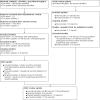


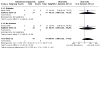


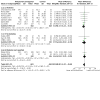


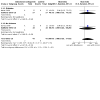




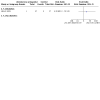

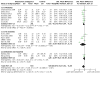

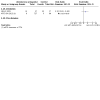
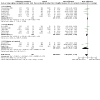
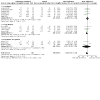
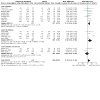

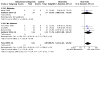



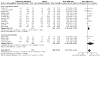
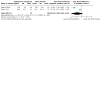

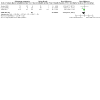









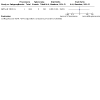
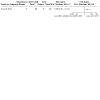
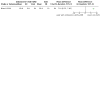

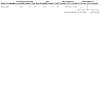
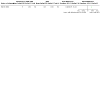

Update of
-
Aldosterone antagonists for preventing the progression of chronic kidney disease.Cochrane Database Syst Rev. 2014 Apr 29;(4):CD007004. doi: 10.1002/14651858.CD007004.pub3. Cochrane Database Syst Rev. 2014. Update in: Cochrane Database Syst Rev. 2020 Oct 27;10:CD007004. doi: 10.1002/14651858.CD007004.pub4. PMID: 24782282 Updated.
Comment in
-
Aldosterone Antagonists in Addition to Renin Angiotensin System Antagonists for Preventing the Progression of CKD: Editorial Summary of a Cochrane Review.Am J Kidney Dis. 2021 May;77(5):810-812. doi: 10.1053/j.ajkd.2020.11.019. Epub 2021 Jan 5. Am J Kidney Dis. 2021. PMID: 33418014 No abstract available.
References
References to studies included in this review
Abolghasmi 2011 {published data only}
-
- Abolghasmi R, Taziki O. Efficacy of low dose spironolactone in chronic kidney disease with resistant hypertension. Saudi Journal of Kidney Diseases & Transplantation 2011;22(1):75-8. [MEDLINE: ] - PubMed
ARTS 2012 {published data only}
-
- Pitt B, Filippatos G, Gheorghiade M, Kober L, Krum H, Ponikowski P, et al. Rationale and design of ARTS: a randomized, double-blind study of BAY 94-8862 in patients with chronic heart failure and mild or moderate chronic kidney disease. European Journal of Heart Failure 2012;14(6):668-75. [MEDLINE: ] - PubMed
-
- Pitt B, Kober L, Ponikowski P, Gheorghiade M, Filippatos G, Krum H, et al. Safety and tolerability of the novel non-steroidal mineralocorticoid receptor antagonist BAY 94-8862 in patients with chronic heart failure and mild or moderate chronic kidney disease: a randomized, double-blind trial. European Heart Journal 2013;34(31):2453-63. [MEDLINE: ] - PMC - PubMed
ARTS‐DN 2015 {published data only}
-
- Bakris GL, Agarwal R, Chan JC, Cooper ME, Gansevoort RT, Haller H, et al. Effect of finerenone on albuminuria in patients with diabetic nephropathy: a randomized clinical trial. JAMA 2015;314(9):884-94. [MEDLINE: ] - PubMed
-
- Katayama S, Yamada D, Nakayama M, Yamada T, Myoishi M, Kato M, et al. A randomized controlled study of finerenone versus placebo in Japanese patients with type 2 diabetes mellitus and diabetic nephropathy. Journal of Diabetes & its Complications 2017;31(4):758-65. [MEDLINE: ] - PubMed
-
- Ruilope LM, Agarwal R, Chan JC, Cooper ME, Gansevoort RT, Haller H, et al. Effects of finerenone in patients with diabetic nephropathy [abstract]. In: ISN World Congress of Nephrology; 2015 March 13-17; Cape Town, South Africa. 2015.
-
- Ruilope LM, Agarwal R, Chan JC, Cooper ME, Gansevoort RT, Haller H, et al. Rationale, design, and baseline characteristics of ARTS-DN: a randomized study to assess the safety and efficacy of finerenone in patients with type 2 diabetes mellitus and a clinical diagnosis of diabetic nephropathy. American Journal of Nephrology 2015;40(6):572-81. [MEDLINE: ] - PubMed
ARTS‐HF 2015 {published data only}
-
- Filippatos G, Anker SD, Bohm M, Gheorghiade M, Kober L, Krum H, et al. A randomized controlled study of finerenone vs. eplerenone in patients with worsening chronic heart failure and diabetes mellitus and/or chronic kidney disease. European Heart Journal 2016;37(27):2105-14. [MEDLINE: ] - PMC - PubMed
-
- Pitt B, Anker SD, Bohm M, Gheorghiade M, Kober L, Krum H, et al. Rationale and design of MinerAlocorticoid Receptor antagonist Tolerability Study-Heart Failure (ARTS-HF): a randomized study of finerenone vs. eplerenone in patients who have worsening chronic heart failure with diabetes and/or chronic kidney disease. European Journal of Heart Failure 2015;17(2):224-32. [MEDLINE: ] - PubMed
-
- Sato N, Ajioka M, Yamada T, Kato M, Myoishi M, Yamada T, et al. A randomized controlled study of finerenone vs. eplerenone in Japanese patients with worsening chronic heart failure and diabetes and/or chronic kidney disease. Circulation Journal 2016;80(5):1113-22. [MEDLINE: ] - PubMed
Bianchi 2006 {published data only}
-
- Bianchi S, Bigazzi R, Campese VM. Long-term effects of spironolactone on proteinuria and kidney function in patients with chronic kidney disease. Kidney International 2006;70(12):2116-23. [MEDLINE: ] - PubMed
-
- Bianchi S, Bigazzi R, Campese VM. Spironolactone reduces proteinuria and retards the progression of kidney disease: a long-term study [abstract no: TH-FC152]. Journal of the American Society of Nephrology 2006;17(Abstracts):33A. [CENTRAL: CN-00615828]
Bianchi 2010 {published data only}
-
- Bianchi S, Bigazzi R, Campese VM. Intensive versus conventional therapy to slow the progression of idiopathic glomerular diseases. American Journal of Kidney Diseases 2010;55(4):671-81. [MEDLINE: ] - PubMed
Boesby 2011 {published data only}
-
- Boesby L, Elung-Jensen T, Strandgaard S, Kamper A. Aldosterone blockade in patients with non-diabetic chronic kidney disease [abstract no: SA153]. NDT Plus 2009;2(Suppl 2):ii882. [CENTRAL: CN-01912397]
Boesby 2013 {published data only}
Chen 2018b {published data only}
-
- Chen Y, Liu P, Chen X, Li Y, Zhang F, Wang Y. Effects of different doses of irbesartan combined with spironolactone on urinary albumin excretion rate in elderly patients with early type 2 diabetic nephropathy. American Journal of the Medical Sciences 2018;355(5):418-24. [MEDLINE: ] - PubMed
Chrysostomou 2006 {published data only}
-
- Chrysostomou A, Pedagogos E, Briganti E, Becker GJ. A double blind, placebo controlled study on the effect of the aldosterone receptor blocker: spironolactone, in patients with persistent proteinuria on longterm ACE inhibitor therapy, with or without an ATRB [abstract no: T-PO20016]. Nephrology 2005;10(Suppl 1):A137. [CENTRAL: CN-00602127] - PubMed
-
- Chrysostomou A, Pedagogos E, MacGregor L, Becker GJ. Double-blind, placebo-controlled study on the effect of the aldosterone receptor antagonist spironolactone in patients who have persistent proteinuria and are on long-term angiotensin-converting enzyme inhibitor therapy, with or without an angiotensin II receptor blocker. Clinical Journal of the American Society of Nephrology: CJASN 2006;1(2):256-62. [MEDLINE: ] - PubMed
Cohen 2010 {published data only}
-
- Cohen DL, Sterling K, Townsend RR. Discordant changes in vascular compliance and proteinuria with drug therapy in CKD patients [abstract no: PUB556]. Journal of the American Society of Nephrology 2010;21(Abstracts):936A. [CENTRAL: CN-01657694]
-
- Cohen DL, Sterling KA, Townsend RR. Addition of eplerenone to RAAS blockade in patients with CKD and proteinuria correlates with baseline vascular compliance [abstract no: PO247]. Journal of Clinical Hypertension 2011;13(4 Suppl 1):A116. [CENTRAL: CN-01657695]
CRIBS II 2009 {published data only}
-
- Cabrera SE, Edwards NC, Steeds RP, Townend JN, Ferro CJ. Spironolactone increases serum uric acid levels in patients with chronic kidney disease. Journal of Human Hypertension 2014;28(3):210-1. [MEDLINE: ] - PubMed
-
- Edwards NC, Ferro CJ, Kirkwood H, Chue CD, Young AA, Stewart PM, et al. Effect of spironolactone on left ventricular systolic and diastolic function in patients with early stage chronic kidney disease. American Journal of Cardiology 2010;106(10):1505-11. [MEDLINE: ] - PubMed
-
- Edwards NC, Steeds RP, Stewart PM, Ferro CJ, Townend JN. Effect of spironolactone on left ventricular mass and aortic stiffness in early-stage chronic kidney disease: a randomized controlled trial. Journal of the American College of Cardiology 2009;54(6):505-12. [MEDLINE: ] - PubMed
-
- Hammer F, Edwards NC, Hughes BA, Steeds RP, Ferro CJ, Townend JN, et al. The effect of spironolactone upon corticosteroid hormone metabolism in patients with early stage chronic kidney disease. Clinical Endocrinology 2010;73(5):566-72. [MEDLINE: ] - PubMed
Epstein 2002 {published data only}
-
- Epstein M, Buckalew V, Martinez F. Antiproteinuric efficacy of eplerenone, enalapril, and eplerenone/enalapril combination therapy in diabetic hypertensives with microalbuminuria [abstract no: OR54]. American Journal of Hypertension 2002;15(4 Suppl 1):24A. [CENTRAL: CN-00689079]
Epstein 2006 {published data only}
-
- Epstein M, Weinberger M, Lewin A, Martinez F, He W, Krause S. The selective aldosterone blocker eplerenone reduces proteinuria without concomitant hyperkalemia [abstract no: F-FC026]. Journal of the American Society of Nephrology 2003;14(Nov):6A. [CENTRAL: CN-00550622]
-
- Epstein M, Williams GH, Weinberger M, Lewin A, Krause S, Mukherjee R, et al. Selective aldosterone blockade with eplerenone reduces albuminuria in patients with type 2 diabetes. Clinical Journal of the American Society of Nephrology: CJASN 2006;1(5):940-51. [MEDLINE: ] - PubMed
Esteghamati 2013 {published data only}
-
- Esteghamati A, Noshad S, Jarrah S, Mousavizadeh M, Khoee SH, Nakhjavani M. Long-term effects of addition of mineralocorticoid receptor antagonist to angiotensin II receptor blocker in patients with diabetic nephropathy: a randomized clinical trial. Nephrology Dialysis Transplantation 2013;28(11):2823-33. [MEDLINE: ] - PubMed
EVALUATE 2010 {published data only}
-
- Ando K, Ohtsu H, Arakawa Y, Kubota K, Yamaguchi T, Nagase M, et al. Rationale and design of the Eplerenone combination Versus conventional Agents to Lower blood pressure on Urinary Antialbuminuric Treatment Effect (EVALUATE) trial: a double-blinded randomized placebo-controlled trial to evaluate the antialbuminuric effects of an aldosterone blocker in hypertensive patients with albuminuria. Hypertension Research - Clinical & Experimental 2010;33(6):616-21. [MEDLINE: ] - PubMed
-
- Ando K, Ohtsu H, Uchida S, Kaname S, Arakawa Y, Fujita T, et al. Anti-albuminuric effect of the aldosterone blocker eplerenone in non-diabetic hypertensive patients with albuminuria: a double-blind, randomised, placebo-controlled trial. Lancet Diabetes & Endocrinology 2014;2(12):944-53. [MEDLINE: ] - PubMed
-
- Fujita T, Uchida S, Seki G, Kaname S. The antialbuminuric effects of an aldosterone blocker in hypertensive patients with albuminuria: a double-blinded, randomized, placebo-controlled (EVALUATE) trial [abstract no: SA-PO1081]. Journal of the American Society of Nephrology 2013;24(Abstract Suppl):3B.
Fogari 2014 {published data only}
-
- Fogari R, Derosa G, Zoppi A, Lazzari P, D'Angelo A, Mugellini A. Comparative effect of canrenone or hydrochlorothiazide addition to valsartan/amlodipine combination on urinary albumin excretion in well-controlled type 2 diabetic hypertensive patients with microalbuminuria. Expert Opinion on Pharmacotherapy 2014;15(4):453-9. [MEDLINE: ] - PubMed
Furumatsu 2008 {published data only}
-
- Furumatsu Y, Nagasawa Y, Tomida K, Mikami S, Kaneko T, Okada N, et al. Effect of renin-angiotensin-aldosterone system triple blockade on non-diabetic renal disease: addition of an aldosterone blocker, spironolactone, to combination treatment with an angiotensin-converting enzyme inhibitor and angiotensin II receptor blocker. Hypertension Research - Clinical & Experimental 2008;31(1):59-67. [MEDLINE: ] - PubMed
-
- Furumatsu Y, Shoji T, Hayashi D, Tomida K, Kaneko T, Tsubakihara Y, et al. Antiproteiuric effect of triple blockade with angiotensin-converting-enzyme inhibitor, angiotensin-II receptor blocker and spironolactone: one year follow up [abstract no: SU-FC069]. Journal of the American Society of Nephrology 2004;15(Oct):58A. [CENTRAL: CN-00653797]
-
- Furumatsu Y, Shoji T, Tomida K, Mikami S, Kaneko T, Togawa M, et al. Antiproteinuric effect of triple blockage with angiotensin-converting-enzyme inhibitor, angiotensin-II receptor blocker and spironolactone [abstract no: SU-PO1031]. Journal of the American Society of Nephrology 2003;14(Suppl S):762A. [CENTRAL: CN-00653796]
Guney 2009 {published data only}
-
- Guney I, Selcuk NY, Altintepe L, Atalay H, Basarali MK, Buyukbas S. Antifibrotic effects of aldosterone receptor blocker (spironolactone) in patients with chronic kidney disease. Renal Failure 2009;31(9):779-84. [MEDLINE: ] - PubMed
Hamid 2017a {published data only}
-
- Hamid N, Taher M. Effect of hydrochlorothiazide and spironolactone on reducing proteinuria among patients with diabetic nephropathy treated by angiotensin converting enzyme inhibitors [abstract no: P113]. Iranian Journal of Kidney Diseases 2017;11(Suppl 1):11-2. [EMBASE: 616611416]
-
- Noshad H, Manzari T. Hydrochlorothiazide or spironolacton in diabetic nephropathy [abstract no: SP446]. Nephrology Dialysis Transplantation 2017;32(Suppl 3):iii273. [EMBASE: 617291179]
Hase 2013 {published data only}
Haykal 2007 {published data only}
-
- Haykal WJ, Kuryata OV, Frolova EO, Shvedenko OO. The effects of aldosterone blockade on proteinuria and glomerular filtration rate in patients with chronic kidney disease [abstract no: SAP075]. Nephrology Dialysis Transplantation 2007;22(Suppl 6):vi257. [CENTRAL: CN-01657693]
Horestani 2012 {published data only}
-
- Horestani MK, Behradmanesh S, Momeni A, Baradaran A. Effects of spironolactone on proteinuria of patients with type 2 diabetes. Journal of Isfahan Medical School 2012;30(200). [EMBASE: 2012617320]
-
- Momeni A, Behradmanesh MS, Kheiri S, Karami Horestani M. Evaluation of spironolactone plus hydrochlorothiazide in reducing proteinuria in type 2 diabetic nephropathy. Journal of the Renin-Angiotensin-Aldosterone System 2015;16(1):113-8. [MEDLINE: ] - PubMed
Ito 2019a {published data only}
-
- Ito S, Shikata K, Nangaku M, Okuda Y, Sawanobori T. Efficacy and safety of esaxerenone (CS-3150) for the treatment of type 2 diabetes with microalbuminuria: a randomized, double-blind, placebo-controlled, phase II trial. Clinical Journal of the American Society of Nephrology: CJASN 2019;14(8):1161-72. [MEDLINE: ] - PMC - PubMed
Kato 2015 {published data only}
-
- Kato S, Maruyama S, Makino H, Wada J, Uzu T, Araki H, et al. Renoprotective effects of combining RAS blockade drugs with spironolactone in patients with diabetic mephropathy and overt albuminuria [abstract no: MP302]. Nephrology Dialysis Transplantation 2014;29(Suppl 3):iii428. [EMBASE: 71492704]
-
- Kato S, Maruyama S, Makino H, Wada J, Uzu T, Araki H, et al. Spironolactone improving intrarenal renin-angiotensin system activation in type II diabetic nephropathy patients with overt albuminuria [abstract no: PS3-039]. Nephrology 2014;19(Suppl 2):172.
Koroshi 2010 {published data only}
-
- Koroshi A, Idrizi A, Gjergji Z, Hoxha B, Emrullaj E, Spahia E, et al. Combination of angiotensin converting enzyme inhibitors with mineralocorticoid antagonists in diabetic nephropathy [abstract no: SU342]. NDT Plus 2010;3(Suppl 3):iii424. [EMBASE: 70484562]
Lv 2009a {published data only}
-
- Lv J, Qin S, Li Y, Zhang H, Liu L, Shi S, et al. Change of proteinuria after adding spironolactone ACE inhibitor or angiotensin receptor blockers in IGA nephropathy, a pilot study [abstract no: SA309]. NDT Plus 2009;2(Suppl 2):ii1029. [CENTRAL: CN-01657692]
Mehdi 2009 {published data only}
-
- Mehdi UF, Adams-Huet B, Raskin P, Vega GL, Toto RD. Effect of an angiotensin receptor blocker (ARB) or a mineralocorticoid antagonist (MRA) added-on to maximally-dosed angiotensin converting enzyme inhibitor (ACEi) regimen in diabetic nephropathy (DN) [abstract no: TH-FC128]. Journal of the American Society of Nephrology 2008;19(Abstracts Issue):28A. [CENTRAL: CN-00756304]
-
- Srivastava A, Adams-Huet B, Vega GL, Toto RD. Effect of losartan and spironolactone on lipoprotein metabolism in diabetic nephropathy [abstract no: 266]. American Journal of Kidney Diseases 2012;59(4):A81. [EMBASE: 71074879]
Morales 2009 {published data only}
-
- Morales E, Huerta A, Gutierrez E, Gutierrez SE, Segura J, Praga M. The antiproteinuric effect of the blockage of the renin-angiotensin-aldosterone system (RAAS) in obese patients. Which treatment option is the most effective? [Efecto antiproteinurico del bloqueo del sistema renina-angiotensina-aldosterona (SRAA) en los pacientes obesos. Cual es la opcion terapeutica mas eficaz]. Nefrologia 2009;29(5):421-9. [MEDLINE: ] - PubMed
-
- Morales E, Huerta A, Gutierrez-Millet V, Gutierrez E, Gutierrez-Solis E, Hernandez E, et al. Antiproteinuric effect of renin-angiotensin-aldosterone system (RAAS) in obese patients. Which is the most effective option? [abstract no: SA131]. NDT Plus 2009;2(Suppl 2):ii882. [CENTRAL: CN-01657690]
-
- Morales E, Huerta A, Gutierrez-Solis E, Gutierrez E, Polanco N, Gutierrez-Millet V, et al. Antiproteinuric effect of renin-angiotensin-aldosterone system (RAAS) in obese patients. Which is the most effective option? [abstract no: F-PO1941]. Journal of the American Society of Nephrology 2008;19(Abstracts Issue):549A. [CENTRAL: CN-00790676]
Morales 2015 {published data only}
-
- Morales E, Caro J, Gutierrez E, Sevillano A, Aunon P, Fernandez C, et al. Diverse diuretics regimens differentially enhance the antialbuminuric effect of renin-angiotensin blockers in patients with chronic kidney disease. Kidney International 2015;88(6):1434-41. [MEDLINE: ] - PubMed
-
- Morales E, Caro J, Gutierrez E, Sevillano A, Aunon P, Praga M. Crossover randomized clinical trial to evaluate the albuminuric effect of three different types of diuretics (spironolactone, hydroclorothiazide and hydroclorothiazide+amiloride) on top of RAAS blockade in proteinuric nephropathies [abstract no: SP309]. Nephrology Dialysis Transplantation 2015;30(Suppl 3):iii482. [EMBASE: 72207635]
-
- Morales E, Espada PJ, Gutierrez-Martinez E, Praga M. Crossover randomised clinical trial to evaluate the antialbuminuric effect of three different types of diuretics (spironolactone, hydrochlorothiazide and hydrochlorothiazide + amiloride) on top of RAAS blockade in proteinuric nephropathies [abstract no: TH-PO655]. Journal of the American Society of Nephrology 2014;25(Abstract Suppl):257A.
Nielsen 2012 {published data only}
-
- Nielsen S, Persson F, Frandsen E, Sugaya T, Hess G, Zdunek D, et al. Spironolactone diminishes urinary albumin excretion in type 1 diabetic patients with microalbuminuria: a randomised placebo-controlled crossover study [abstract no: 1099]. Diabetologia 2011;54(Suppl 1):S445. [EMBASE: 70563244] - PubMed
-
- Nielsen S, Persson F, Frandsen E, Sugaya T, Zdunek DW, Pedersen K, et al. Spironolactone diminishes urinary albumin excretion in type 1 diabetic patients with microalbuminuria: a randomized placebo-controlled crossover study [abstract no: TH-PO548]. Journal of the American Society of Nephrology 2011;22(Abstracts):238A. [CENTRAL: CN-01912458]
-
- Nielsen SE, Persson F, Frandsen E, Sugaya T, Hess G, Zdunek D, et al. Spironolactone diminishes urinary albumin excretion in patients with type 1 diabetes and microalbuminuria: a randomized placebo-controlled crossover study. Diabetic Medicine 2012;29(8):e184-90. [MEDLINE: ] - PubMed
Ogawa 2006a {published data only}
-
- Ogawa S, Takeuchi K, Mori T, Nako K, Ito S. Spironolactone further reduces urinary albumin excretion and plasma B-type natriuretic peptide levels in hypertensive type II diabetes treated with angiotensin-converting enzyme inhibitor. Clinical & Experimental Pharmacology & Physiology 2006;33(5-6):477-9. [MEDLINE: ] - PubMed
Rossing 2005 {published data only}
-
- Rossing K, Schjoedt KJ, Smidt UM, Boomsma F, Parving HH. Beneficial effects of adding spironolactone to recommended antihypertensive treatment in diabetic nephropathy: a randomized, double-masked, cross-over study. Diabetes Care 2005;28(9):2106-12. [MEDLINE: ] - PubMed
Saklayen 2008 {published data only}
-
- Saklayen M, Gyebi L, Tasosa J, Yap J. Spironolactone reduces proteinuria further in diabetic patients who are already on ACE inhibitor or ARB therapy: results of a randomized, placebo-controlled, double-blind cross-over trial [abstract no: TH-PO240]. Journal of the American Society of Nephrology 2006;17(Abstracts):157A. [CENTRAL: CN-00615896]
-
- Saklayen MG, Gyebi LK, Tasosa J, Yap J. Effects of additive therapy with spironolactone on proteinuria in diabetic patients already on ACE inhibitor or ARB therapy: results of a randomized, placebo-controlled, double-blind, crossover trial. Journal of Investigative Medicine 2008;56(4):714-9. [MEDLINE: ] - PubMed
Schjoedt 2005 {published data only}
-
- Schjoedt KJ, Rossing K, Juhl TR, Boomsma F, Rossing P, Parving HH. Beneficial impact of spironolactone in diabetic nephropathy. Kidney International 2005;68(6):2829-36. [MEDLINE: ] - PubMed
-
- Schjoedt KJ, Rossing K, Tarnow L, Parving H. Beneficial impact of spironolactone on nephrotic range albuminuria in diabetic nephropathy [abstract no: F-FC090]. Journal of the American Society of Nephrology 2005;16(Abstracts):57A. [CENTRAL: CN-00689347] - PubMed
Smolen 2006 {published data only}
-
- Smolen E, Nowicki M. Contrasting effects of spironolactone and hydrochlorothiazide in patients with persistent glomerular proteinuria [abstract no: MP260]. Nephrology Dialysis Transplantation 2006;21(Suppl 4):iv386. [CENTRAL: CN-00716094]
Takebayashi 2006 {published data only}
-
- Matsumoto S, Takebayashi K, Aso Y. The effect of spironolactone on circulating adipocytokines in patients with type 2 diabetes mellitus complicated by diabetic nephropathy. Metabolism: Clinical & Experimental 2006;55(12):1645-52. [MEDLINE: ] - PubMed
-
- Takebayashi K, Matsumoto S, Aso Y, Inukai T. Aldosterone blockade attenuates urinary monocyte chemoattractant protein-1 and oxidative stress in patients with type 2 diabetes complicated by diabetic nephropathy. Journal of Clinical Endocrinology & Metabolism 2006;91(6):2214-7. [MEDLINE: ] - PubMed
Tokunaga 2008a {published data only}
-
- Tokunaga M, Tamura M, Kabashima N, Serino R, Shibata T, Matsumoto M, et al. Add-on spironolactone in patients with advanced chronic kidney disease treated with angiotensin II receptor blockers [abstract no: F-PO1840]. Journal of the American Society of Nephrology 2008;19(Abstracts Issue):525A. [CENTRAL: CN-01657689]
Tylicki 2008 {published data only}
-
- Larczynski W, Tylicki L, Rutkowski P, Renke M, Rutkowski B. The triple renin-angiotensin-aldosterone system blockade - new promising nephroprotective strategy in patients with proteinuric nondiabetic renal disease [abstract no: SAP081]. Nephrology Dialysis Transplantation 2007;22(Suppl 6):vi259. [CENTRAL: CN-00653742]
-
- Tylicki L, Rutkowski P, Renke M, Larczynski W, Aleksandrowicz E, Lysiak-Szydlowska W, et al. Triple pharmacological blockade of the renin-angiotensin-aldosterone system in nondiabetic CKD: an open-label crossover randomized controlled trial. American Journal of Kidney Diseases 2008;52(3):486-93. [MEDLINE: ] - PubMed
-
- Tylicki L, Rutkowski P, Renke M, Rutkowski B. Addition of aldosterone receptor blocker to dual renin-angiotensin-aldosterone blockade leads to limitation of tubulointerstitial injury of kidney. Kidney International 2007;72(9):1164-5. [MEDLINE: ] - PubMed
Tylicki 2012 {published data only}
-
- Lizakowski S, Rutkowski P, Tylicki L, Renke M, Sulikowska B, Donderski R, et al. The effect of various types of the renin-angiotensin-aldosteron system blockade on proteinuria in chronic non-diabetic kidney disease: a double-blind cross-over randomised controlled trial [abstract no: FP112]. Nephrology Dialysis Transplantation 2012;27(Suppl 2):ii109. [EMBASE: 70765606]
-
- Lizakowski S, Tylicki L, Rutkowski P, Renke M, Sulikowska B, Heleniak Z, et al. Safety of enhanced renin-angiotensin-aldosterone system inhibition with aliskiren in nondiabetic patients with chronic kidney disease. Polskie Archiwum Medycyny Wewnetrznej 2013;123(5):221-7. [MEDLINE: ] - PubMed
-
- Tylicki L, Lizakowski S, Rutkowski P, Renke M, Sulikowska B, Heleniak Z, et al. The enhanced renin-angiotensin-aldosteron system pharmacological blockade--which is the best? Kidney & Blood Pressure Research 2012;36(1):335-43. [MEDLINE: ] - PubMed
van den Meiracker 2006 {published data only}
-
- den Meiracker AH, Baggen RG, Pauli S, Lindemans A, Vulto AG, Poldermans D. Spironolactone in type 2 diabetic nephropathy: effects on proteinuria, blood pressure and renal function. Journal of Hypertension 2006;24(11):2285-92. [MEDLINE: ] - PubMed
Wang 2013g {published data only}
Zheng 2011 {published data only}
-
- Zheng H, Qiu H, Liu X, Jiang B. Clinical investigation of combined therapy with benazepril and spironolactone in diabetic nephropathy. Pharmaceutical Care & Research 2011;11(4):266-8. [EMBASE: 2011509942]
Ziaee 2013 {published data only}
References to studies excluded from this review
ATHENA‐HF 2019 {published data only}
-
- Greene SJ, Felker GM, Giczewska A, Kalogeropoulos AP, Ambrosy AP, Chakraborty H, et al. Spironolactone in acute heart failure patients with renal dysfunction and risk factors for diuretic resistance: from the ATHENA-HF trial. Canadian Journal of Cardiology 2019;35(9):1097-105. [MEDLINE: ] - PMC - PubMed
-
- Greene SJ, Felker GM, Giczewska A, Kalogeropoulos AP, Ambrosy AP, Chakraborty H, et al. Spironolactone in acute heart failure patients with renal dysfunction and risk factors for diuretic resistance: from the ATHENA-HF trial [abstract no: 10456]. Circulation 2018;138(Suppl 1):A10456. [EMBASE: 627102576] - PMC - PubMed
Barr 1995 {published data only}
-
- Barr CS, Lang CC, Hanson J, Arnott M, Kennedy N, Struthers AD. Effects of adding spironolactone to an angiotensin-converting enzyme inhibitor in chronic congestive heart failure secondary to coronary artery disease. American Journal of Cardiology 1995;76(17):1259-65. [MEDLINE: ] - PubMed
Berry 2007 {published data only}
-
- Berry C, Murphy NF, De Vito G, Galloway S, Seed A, Fisher C, et al. Effects of aldosterone receptor blockade in patients with mild-moderate heart failure taking a beta-blocker.[Erratum in: Eur J Heart Fail. 2007 Oct;9(10):1074 Note: Murphy, Niamh [corrected to Murphy, Niamh F]]. European Journal of Heart Failure 2007;9(4):429-34. [MEDLINE: ] - PubMed
Blanchard 2015 {published data only}
EMPHASIS‐HF 2010 {published data only}
-
- Eschalier R, McMurray JJ, Swedberg K, Veldhuisen DJ, Krum H, Pocock SJ, et al. Safety and efficacy of eplerenone in patients at high risk for hyperkalemia and/or worsening renal function: analyses of the EMPHASIS-HF study subgroups (Eplerenone in Mild Patients Hospitalization And SurvIval Study in Heart Failure). Journal of the American College of Cardiology 2013;62(17):1585-93. [MEDLINE: ] - PubMed
-
- Ferreira JP, Abreu P, McMurray JJ, Veldhuisen DJ, Swedberg K, Pocock SJ, et al. Renal function stratified dose comparisons of eplerenone versus placebo in the EMPHASIS-HF trial. European Journal of Heart Failure 2019;21(3):345-51. [EMBASE: 626398757] - PubMed
-
- Krum H, Shi H, Pitt B, McMurray J, Swedberg K, Veldhuisen DJ, et al. Clinical benefit of eplerenone in patients with mild symptoms of systolic heart failure already receiving optimal best practice background drug therapy: analysis of the EMPHASIS-HF study. Circulation: Heart Failure 2013;6(4):711-8. [MEDLINE: ] - PubMed
-
- Rogers JK, McMurray JJ, Pocock SJ, Zannad F, Krum H, Veldhuisen DJ, et al. Eplerenone in patients with systolic heart failure and mild symptoms: analysis of repeat hospitalizations. Circulation 2012;126(19):2317-23. [MEDLINE: ] - PubMed
-
- Rossignol P, Dobre D, McMurray JJ, Swedberg K, Krum H, Veldhuisen DJ, et al. Incidence, determinants, and prognostic significance of hyperkalemia and worsening renal function in patients with heart failure receiving the mineralocorticoid receptor antagonist eplerenone or placebo in addition to optimal medical therapy: results from the Eplerenone in Mild Patients Hospitalization and Survival Study in Heart Failure (EMPHASIS-HF). Circulation: Heart Failure 2014;7(1):51-8. [MEDLINE: ] - PubMed
Epstein 1998 {published data only}
-
- Epstein M, Alexander JC, Roniker B. Eplerenone, a new selective aldosterone receptor antagonist (SARA): efficacy in patients with mild to moderate hypertension [abstract no: A1640]. Journal of the American Society of Nephrology 1998;9(Program & Abstracts):322-3A. [CENTRAL: CN-00445239]
Essaian 2007 {published data only}
-
- Essaian A, Kaukov I, Karabayeva A, Kadinskaya M, Katysheva N. The influence of spironolactone on plasma level of plasminogen-activator inhibitor type 1 (PAI-1) in anuric hemodialysis patients [abstract no: SaP266]. Nephrology Dialysis Transplantation 2007;22(Suppl 6):vi322. [CENTRAL: CN-00716089]
Hollenberg 2003a {published data only}
-
- Hollenberg NK, Williams GH, Anderson R, Akhras KS, Bittman RM, Krause SL. Symptoms and the distress they cause: comparison of an aldosterone antagonist and a calcium channel blocking agent in patients with systolic hypertension. Archives of Internal Medicine 2003;163(13):1543-8. [MEDLINE: ] - PubMed
Karalliedde 2006 {published data only}
-
- Karalliedde J, Buckingham R, Starkie M, Lorand D, Stewart M, Viberti G, et al. Effect of various diuretic treatments on rosiglitazone-induced fluid retention. Journal of the American Society of Nephrology 2006;17(12):3482-90. [MEDLINE: ] - PubMed
Makhlough 2014 {published data only}
-
- Makhlough A, Kashi Z, Akha O. Effect of spironolactone-placebo and spironolacton-losartan on microalbuminuria in type II diabetes patients [abstract]. Iranian Journal of Kidney Diseases 2011;5(Suppl 2):46. [EMBASE: 70673884]
Medeiros 2017 {published data only}
-
- Medeiros M, Ramirez S, Velasquez L, Hernandez AM, Valverde S, Vargas A, et al. Aldosterone blockade in children with chronic allograft nephropathy [abstract no: O-10]. Pediatric Nephrology 2010;25(9):1808. [EMBASE: 70438169]
-
- Medeiros M, Sosa J, Velasquez L, Hernandez AM, Ramirez S, Valverde S, et al. Aldosterone blockade in children with chronic allograft nephropathy [abstract no: 1296]. American Journal of Transplantation 2010;10(Suppl 4):411. [EMBASE: 70464672]
-
- Medeiros M, Velasquez-Jones L, Hernandaz AM, Ramirez S, Fuentes Y, Valverdes S, et al. Aldosterone blockade in children with chronic allograft nephropathy [abstract no: 234]. Pediatric Transplantation 2011;15(Suppl 1):98-9. [EMBASE: 70508755]
-
- Medeiros M, Velasquez-Jones L, Hernandez AM, Ramon-Garcia G, Valverde S, Fuentes Y, et al. Randomized controlled trial of mineralocorticoid receptor blockade in children with chronic kidney allograft nephropathy. Clinical Journal of the American Society of Nephrology: CJASN 2017;12(8):1291-300. [MEDLINE: ] - PMC - PubMed
-
- Medeiros M, Velasquez-Jones L, Hernandez AM, Valverde S, Fuentes Y, Barrera-Chimal J, et al. Mineralocorticoid receptor blockade in children with chronic allograft injury [abstract no: 116]. Pediatric Transplantation 2013;17(Suppl 1):71. [EMBASE: 71163526]
Oxlund 2015 {published data only}
-
- Lindhardt M, Oxlund CS, Mischak H, Jacobsen IA, Rossing P, Lambers Heerspink HJ. A urinary peptide classifier predicts albuminuria response to spironolactone in patients with type 2 diabetes and hypertension [abstract no: SA-PO255]. Journal of the American Society of Nephrology 2014;25(Abstract Suppl):694A.
-
- Lindhardt M, Persson F, Oxlund C, Jacobsen IA, Zurbig P, Mischak H, et al. Predicting albuminuria response to spironolactone treatment with urinary proteomics in patients with type 2 diabetes and hypertension. Nephrology Dialysis Transplantation 2018;33(2):296-303. [MEDLINE: ] - PubMed
-
- Oxlund C, Kurt B, Schwarzensteiner I, Hansen MR, Staehr M, Svenningsen P, et al. Albuminuria is associated with an increased prostasin in urine while aldosterone has no direct effect on urine and kidney tissue abundance of prostasin. Pflugers Archiv - European Journal of Physiology 2017;469(5-6):655-67. [MEDLINE: ] - PubMed
-
- Oxlund CS, Cangemi C, Henriksen JE, Jacobsen IA, Gram J, Schousboe K, et al. Low-dose spironolactone reduces plasma fibulin-1 levels in patients with type 2 diabetes and resistant hypertension. Journal of Human Hypertension 2015;29(1):28-32. [MEDLINE: ] - PubMed
Preston 2009 {published data only}
-
- Preston RA, Afshartous D, Garg D, Medrano S, Alonso AB, Rodriguez R. Mechanisms of impaired potassium handling with dual renin-angiotensin-aldosterone blockade in chronic kidney disease. Hypertension 2009;53(5):754-60. [MEDLINE: ] - PubMed
PRIORITY 2014 {published data only}
-
- Lindhardt M, Persson F, Currie G, Pontillo C, Beige J, Delles C, et al. Proteomic prediction and Renin angiotensin aldosterone system Inhibition prevention Of early diabetic nephRopathy in TYpe 2 diabetic patients with normoalbuminuria (PRIORITY): essential study design and rationale of a randomised clinical multicentre trial. Trials 2016;6(3):e010310. [MEDLINE: ] - PMC - PubMed
-
- Tofte N, Lindhardt M, Adamova K, Beige J, Beulens JW, Birkenfeld AL, et al. Characteristics of high- and low-risk individuals in the PRIORITY study: urinary proteomics and mineralocorticoid receptor antagonism for prevention of diabetic nephropathy in Type 2 diabetes. Diabetic Medicine 2018;35(10):1375-82. [MEDLINE: ] - PubMed
-
- Tofte N, PRIORITY Study Group. Baseline characteristics in PRIORITY study: proteomics and mineralocorticoid receptor antagonism for prevention of diabetic nephropathy in type 2 diabetes [abstract no: TH-PO718]. Journal of the American Society of Nephrology 2017;28(Abstract Suppl):284.
Rachmani 2004 {published data only}
-
- Anonymous. The effect of spironolactone, cilazapril and their combination on albuminuria in patients with hypertension and diabetic nephropathy is independent of blood pressure reduction: a randomized controlled study.[Retraction of: Rachmani R, Slavachevsky I, Amit M, Levi Z, Kedar Y, Berla M, Ravid M. Diabet Med. 2004 May;21(5):471-5; PMID: 15089793]. Diabetic Medicine 2006;23(7):818. [MEDLINE: ] - PubMed
-
- Rachmani R, Slavachevsky I, Amit M, Levi Z, Kedar Y, Berla M, et al. The effect of spironolactone, cilazapril and their combination on albuminuria in patients with hypertension and diabetic nephropathy is independent of blood pressure reduction: A randomized controlled study. Diabetic Medicine 2004;21(5):471-5. [MEDLINE: ] - PubMed
RALES 1995 {published data only}
-
- Effectiveness of spironolactone added to an angiotensin-converting enzyme inhibitor and a loop diuretic for severe chronic congestive heart failure (the Randomized Aldactone Evaluation Study [RALES]). American Journal of Cardiology 1996;78(8):902-7. [MEDLINE: ] - PubMed
-
- Glick HA, Orzol SM, Tooley JF, Remme WJ, Sasayama S, Pitt B. Economic evaluation of the randomized aldactone evaluation study (RALES): treatment of patients with severe heart failure. Cardiovascular Drugs & Therapy 2002;16(1):53-9. [MEDLINE: ] - PubMed
-
- Hauben M, Reich L, Gerrits CM, Madigan D. Detection of spironolactone-associated hyperkalaemia following the Randomized Aldactone Evaluation Study (RALES). Drug Safety 2007;30(12):1143-9. [MEDLINE: ] - PubMed
-
- Pitt B, Zannad F, Remme WJ, Cody R, Castaigne A, Perez A, et al. The effect of spironolactone on morbidity and mortality in patients with severe heart failure. Randomized Aldactone Evaluation Study Investigators. New England Journal of Medicine 1999;341(10):709-17. [MEDLINE: ] - PubMed
-
- Pitt D. ACE inhibitor co-therapy in patients with heart failure: rationale for the Randomized Aldactone Evaluation Study (RALES). European Heart Journal 1995;16 Suppl N:107-10. [MEDLINE: ] - PubMed
Schjoedt 2006 {published data only}
-
- Schjoedt KJ, Rossing K, Juhl TR, Boomsa F, Tarnow L, Rossing P, et al. Beneficial impact of spironolactone on nephrotic range albuminuria in diabetic nephropathy. Kidney International 2006;70(3):536-42. [MEDLINE: ] - PubMed
Schjoedt 2009 {published data only}
-
- Schjoedt KJ, Christensen PK, Jorsal A, Boomsma F, Rossing P, Parving HH. Autoregulation of glomerular filtration rate during spironolactone treatment in hypertensive patients with type 1 diabetes: a randomized crossover trial. Nephrology Dialysis Transplantation 2009;24(11):3343-9. [MEDLINE: ] - PubMed
-
- Schjoedt KJ, Rossing K, Christensen PK, Parving HH, Rossing P. Autoregulation of the glomerular filtration rate during spironolactone treatment [abstract no: PUB561]. Journal of the American Society of Nephrology 2007;18(Abstracts Issue):953A. [CENTRAL: CN-00689324]
Schmidt 2005 {published data only}
-
- Schmidt BM, Schneider A, Kalizki T, Rastatter A, Schwarz TK, Schmieder RE. Low dose spironolactone rapidly reduces left ventricular mass [abstract no: F-FC099]. Journal of the American Society of Nephrology 2005;16:60A. [CENTRAL: CN-00716088]
Schmidt 2005a {published data only}
-
- Schmidt B, Sammer U, Schaufele T, Schmieder R. Effects of aldosterone on kidney blood flow. Medizinische Klinik 2005;100(Abstract-Band):68. [CENTRAL: CN-00777290]
Schmidt 2008 {published data only}
-
- Schmidt BM, Raff U, Schwab J, Bar I, Schmieder RE. Eplerenone at low dose induces regression of left ventricular hypertrophy in resistant hypertension [abstract no: SA-PO2251]. Journal of the American Society of Nephrology 2008;19(Abstracts Issue):617A. [CENTRAL: CN-01657688]
STOP‐CKD 2014 {published data only}80658312
Swift 2006 {published data only}
-
- Swift PA, Markandu ND, Wood M, Sagnella GA, MacGregor GA. A double blind randomized crossover trial of amiloride and spironolactone in black hypertensives with and without the T594M b-subunit epithelial sodium channel polymorphism [abstract no: TH-FC153]. Journal of the American Society of Nephrology 2006;17(Abstracts):33-4A. [CENTRAL: CN-00716092]
Taheri HD 2009 {published data only}
-
- Mortazavi M, Taheri S, Shahidi S, Pourmoghaddas A, Yaraghi MG, Seyrafian S, et al. Spironolactone in chronic hemodialysis patients improves cardiac function [abstract no: FP379]. Nephrology Dialysis Transplantation 2007;22(Suppl 6):vi145. [CENTRAL: CN-00716090] - PubMed
-
- Taheri S, Mortazavi M, Shahidi S, Pourmoghadas A, Garakyaraghi M, Seirafian S, et al. Spironolactone in chronic hemodialysis patients improves cardiac function. Saudi Journal of Kidney Diseases & Transplantation 2009;20(3):392-7. [MEDLINE: ] - PubMed
-
- Taheri S, Mortazavi M, Shahidi S, Pourmoghadas A, Garakyaraghi M, Seirafian S, et al. Spironolactone in chronic hemodialysis patients improves cardiac function [abstract no: S-PO-0370]. In: 4th World Congress of Nephrology.19th International Congress of the International Society of Nephrology (ISN); 2007 Apr 21-25; Rio de Janeiro, Brazil. 2007:148.
TOPCAT 2014 {published data only}
-
- Anand IS, Claggett B, Liu J, Shah AM, Rector TS, Shah SJ, et al. Interaction between spironolactone and natriuretic peptides in patients with heart failure and preserved ejection fraction: from the TOPCAT Trial. JACC Heart Failure 2017;5(4):241-52. [MEDLINE: ] - PubMed
-
- Beldhuis IE, Myhre PL, Claggett B, Damman K, Fang JC, Lewis EF, et al. Efficacy and safety of spironolactone in patients with HFpEF and chronic kidney disease. JACC Heart Failure 2019;7(1):25-32. [MEDLINE: ] - PubMed
-
- Bristow MR, Sharma K, Assmann SF, Linas S, Gersh BJ, Grady C, et al. Data and Safety Monitoring Board evaluation and management of a renal adverse event signal in TOPCAT. European Journal of Heart Failure 2017;19(4):457-65. [MEDLINE: ] - PubMed
-
- Dalzell JR. Spironolactone for heart failure with preserved ejection fraction. New England Journal of Medicine 2014;371(2):179. [MEDLINE: ] - PubMed
-
- Efthimiadis GK, Zegkos T, Karvounis H. Spironolactone for heart failure with preserved ejection fraction. New England Journal of Medicine 2014;371(2):179-80. [MEDLINE: ] - PubMed
Toto 2005 {published data only}
-
- Toto R, Mortazavi K, Jones K, Roman-Latorre J, Dominguez M, Blackstone S, et al. Combined blockade with the renin-angiotensin-aldosterone system to improve outcomes in diabetics with nephropathy (DN) [abstract no: PUB582]. Journal of the American Society of Nephrology 2005;16:908A.
Viswanathan 2013 {published data only}
-
- Viswanathan V, Mohan V, Subramani P, Parthasarathy N, Subramaniyam G, Manoharan D, et al. Effect of spironolactone and amiloride on thiazolidinedione-induced fluid retention in South Indian patients with type 2 diabetes. Clinical Journal of the American Society of Nephrology: CJASN 2013;8(2):225-32. [MEDLINE: ] - PMC - PubMed
References to studies awaiting assessment
NCT00315016 {published data only}
-
- Deinum J. Eplerenone, ACE inhibition and albuminuria. www.clinicaltrials.gov/ct2/show/NCT00315016 (first received 17 April 2006).
SPIRO‐CKD 2017 {published data only}94696478
-
- Hayer MK, Edwards NC, Slinn G, Moody WE, Steeds RP, Ferro CJ, et al. A randomized, multicenter, open-label, blinded end point trial comparing the effects of spironolactone to chlorthalidone on left ventricular mass in patients with early-stage chronic kidney disease: Rationale and design of the SPIRO-CKD trial. American Heart Journal 2017;191:37-46. [MEDLINE: ] - PMC - PubMed
References to ongoing studies
BARACK D 2014 {published data only}44522369
-
- Hill NR, Lasserson D, Thompson B, Perera-Salazar R, Wolstenholme J, Bower P, et al. Benefits of Aldosterone Receptor Antagonism in Chronic Kidney Disease (BARACK D) trial-a multi-centre, prospective, randomised, open, blinded end-point, 36-month study of 2,616 patients within primary care with stage 3b chronic kidney disease to compare the efficacy of spironolactone 25 mg once daily in addition to routine care on mortality and cardiovascular outcomes versus routine care alone: study protocol for a randomized controlled trial. Trials 2014;15:160. [MEDLINE: ] - PMC - PubMed
-
- Jones L, Ogburn E, Yu L, Begum N, Long A, Hobbs FDR. On-site monitoring of primary outcomes is important in primary care clinical trials: Benefits of Aldosterone Receptor Antagonism in Chronic Kidney Disease (BARACK-D) Trial a case study [abstract]. Trials 2019;20(Suppl 1). [EMBASE: 629760839]
FIDELIO‐DKD 2019 {published data only}
FIGARO‐DKD 2019 {published data only}
NCT00870402 {published data only}
-
- Espinoza FG. Effect of aldosterone antagonism in the reduction of albuminuria and diastolic disfunction of patients with diabetic nephropathy. www.clinicaltrials.gov/ct2/show/NCT00870402 (first received 27 March 2009).
Additional references
AASK 2002
-
- Wright JT Jr, Bakris G, Greene T, Agodoa LY, Appel LJ, Charleston J, et al. Effect of blood pressure lowering and antihypertensive drug class on progression of hypertensive kidney disease: results from the AASK trial.[Erratum in: JAMA. 2006 Jun 21;295(23):2726]. Journal of the American Medical Association 2002;288(19):2421-31. [MEDLINE: ] - PubMed
Aldigier 2005
-
- Aldigier JC, Kanjanbuch T, Ma LJ, Brown NJ, Fogo AB. Regression of existing glomerulosclerosis by inhibition of aldosterone. Journal of the American Society of Nephrology 2005;16(11):3306-14. [MEDLINE: ] - PubMed
AMBER 2019
-
- Agarwal R, Rossignol P, Romero A, Garza D, Mayo MR, Warren S, et al. Patiromer versus placebo to enable spironolactone use in patients with resistant hypertension and chronic kidney disease (AMBER): a phase 2, randomised, double-blind, placebo-controlled trial. Lancet 2019;394(10208):1540–50. [MEDLINE: ] - PubMed
Bomback 2007
-
- Bomback AS, Klemmer PJ. The incidence and implications of aldosterone breakthrough. Nature Clinical Practice Nephrology 2007;3(9):486-92. [MEDLINE: ] - PubMed
Bramlage 2016
-
- Bramlage P, Swift SL, Thoenes M, Minguet J, Ferrero C, Schmieder RE. Non-steroidal mineralocorticoid receptor antagonism for the treatment of cardiovascular and renal disease. European Journal of Heart Failure 2016;18(1):28-37. [MEDLINE: ] - PubMed
Brenner 2001
-
- Brenner BM, Cooper ME, Zeeuw D, Keane WF, Mitch WE, Parving HH, et al. Effects of losartan on renal and cardiovascular outcomes in patients with type 2 diabetes and nephropathy. New England Journal of Medicine 2001;345(12):861-9. [MEDLINE: ] - PubMed
Brown 2000
-
- Brown NJ, Nakamura S, Ma L, Nakamura I, Donnert E, Freeman M, et al. Aldosterone modulates plasminogen activator inhibitor-1 and glomerulosclerosis in vivo. Kidney International 2000;58(3):1219-27. [MEDLINE: ] - PubMed
Currie 2016
Fritsch Neves 2003
-
- Fritsch Neves M, Schiffrin EL. Aldosterone: a risk factor for vascular disease. Current Hypertension Reports 2003;5(1):59-65. [MEDLINE: ] - PubMed
GISEN 1997
-
- Randomised placebo-controlled trial of effect of ramipril on decline in glomerular filtration rate and risk of terminal renal failure in proteinuric, non-diabetic nephropathy. The GISEN Group (Gruppo Italiano di Studi Epidemiologici in Nefrologia). Lancet 1997;349(9069):1857-63. [MEDLINE: ] - PubMed
GRADE 2008
GRADE 2011
-
- Guyatt G, Oxman AD, Akl EA, Kunz R, Vist G, Brozek J, et al. GRADE guidelines: 1. Introduction-GRADE evidence profiles and summary of findings tables. Journal of Clinical Epidemiology 2011;64(4):383-94. [MEDLINE: ] - PubMed
Green 1996
Higgins 2003
Higgins 2011
-
- Higgins JP, Green S (editors). Cochrane Handbook for Systematic Reviews of Interventions Version 5.1.0 [updated March 2011]. The Cochrane Collaboration, 2011. Available from www.cochrane-handbook.org.
Hollenberg 2004
-
- Hollenberg NK. Aldosterone in the development and progression of renal injury. Kidney International 2004;66(1):1-9. [MEDLINE: ] - PubMed
Hostetter 2003
-
- Hostetter TH, Ibrahim HN. Aldosterone in chronic kidney and cardiac disease. Journal of the American Society of Nephrology 2003;14(9):2395-401. [MEDLINE: ] - PubMed
Hou 2015
-
- Hou J, Xiong W, Cao L, Wen X, Li A. Spironolactone add-on for preventing or slowing the progression of diabetic nephropathy: a meta-analysis. Clinical Therapeutics 2015;37(9):2086-103. [MEDLINE: ] - PubMed
IDNT 2004
-
- Atkins RC, Briganti EM, Lewis JB, Hunsicker LG, Braden G, Crespigny PJ, et al. Proteinuria reduction and progression to renal failure in patients with type 2 diabetes mellitus and overt nephropathy. American Journal of Kidney Diseases 2004;45(2):281-7. [MEDLINE: ] - PubMed
Ishani 2006
-
- Ishani A, Grandits GA, Grimm RH, Svendsen KH, Collins AJ, Prineas RJ, et al. Association of single measurements of dipstick proteinuria, estimated glomerular filtration rate, and hematocrit with 25-year incidence of end-stage renal disease in the multiple risk factor intervention trial. Journal of the American Society of Nephrology 2006;17(5):1444-52. [MEDLINE: ] - PubMed
Jafar 2001
-
- Jafar TH, Schmid CH, Landa M, Giatras I, Toto R, Remuzzi G, et al. Angiotensin-converting enzyme inhibitors and progression of nondiabetic renal disease. A meta-analysis of patient-level data. Annals of Internal Medicine 2001;135(2):73-87. [MEDLINE: ] - PubMed
Kolkhof 2014
-
- Kolkhof P, Delbeck M, Kretschmer A, Steinke W, Hartmann E, Bärfacker L, et al. Finerenone, a novel selective nonsteroidal mineralocorticoid receptor antagonist protects from rat cardiorenal injury. Journal of Cardiovascular Pharmacology 2014;64(1):69-78. [MEDLINE: ] - PubMed
Levey 2003
-
- Levey AS, Coresh J, Balk E, Kausz AT, Levin A, Steffes MW, et al. National Kidney Foundation practice guidelines for chronic kidney disease: evaluation, classification, and stratification.[Erratum in: Ann Intern Med. 2003 Oct 7;139(7):605]. Annals of Internal Medicine 2003;139(2):137-47. [MEDLINE: ] - PubMed
Mathiesen 1999
Mavrakanas 2014
-
- Mavrakanas TA, Gariani K, Martin PY. Mineralocorticoid receptor blockade in addition to angiotensin converting enzyme inhibitor or angiotensin II receptor blocker treatment: an emerging paradigm in diabetic nephropathy. A systematic review. European Journal of Internal Medicine 2014;25(2):173–6. [MEDLINE: ] - PubMed
Mills 2015
Nakhoul 2008
-
- Nakhoul F, Khankin E, Yaccob A, Kawachi H, Karram T, Awaad H, et al. Eplerenone potentiates the antiproteinuric effects of enalapril in experimental nephrotic syndrome. American Journal of Physiology - Renal Physiology 2008;294(3):F628-37. [MEDLINE: ] - PubMed
Nappi 2011
Nugent 2011
-
- Nugent RA, Fathima SF, Feigl AB, Chyung D. The burden of chronic kidney disease on developing nations: s 21st century challenge in global health. Nephron Clinical Practice 2011;118(3):c269–277. [MEDLINE: ] - PubMed
Phillips 2007
-
- Phillips CO, Kashani A, Ko DK, Francis G, Krumholz HM. Adverse effects of combination angiotensin II receptor blockers plus angiotensin-converting enzyme inhibitors for left ventricular dysfunction: a quantitative review of data from randomized clinical trials. Archives of Internal Medicine 2007;167(18):1930-6. [MEDLINE: ] - PubMed
Pitt 1999
-
- Pitt B, Zannad F, Remme WJ, Cody R, Castaigne A, Perez A, et al. The effect of spironolactone on morbidity and mortality in patients with severe heart failure. Randomized Aldactone Evaluation Study Investigators. New England Journal of Medicine 1999;341(10):709-17. [MEDLINE: ] - PubMed
Pitt 2003
-
- Pitt B, Remme W, Zannad F, Neaton J, Martinez F, Roniker B, et al. Eplerenone, a selective aldosterone blocker, in patients with left ventricular dysfunction after myocardial infarction.[Erratum in: N Engl J Med. 2003 May 29;348(22):2271]. New England Journal of Medicine 2003;348(14):1309-21. [MEDLINE: ] - PubMed
REIN 1998
-
- Ruggenenti P, Perna A, Mosconi L, Pisoni R, Remuzzi G. Urinary protein excretion rate is the best independent predictor of ESRF in non-diabetic proteinuric chronic nephropathies. "Gruppo Italiano di Studi Epidemiologici in Nefrologia" (GISEN). Kidney International 1998;53(5):1209–16. [MEDLINE: ] - PubMed
RENAAL 2001
-
- Brenner BM, Cooper ME, Zeeuw D, Keane WF, Mitch WE, Parving HH, et al. Effects of losartan on renal and cardiovascular outcomes in patients with type 2 diabetes and nephropathy. New England Journal of Medicine 2001;345(12):861-9. [MEDLINE: ] - PubMed
RENAAL 2004
-
- Zeeuw D, Remuzzi G, Parving HH, Keane WF, Zhang Z, Shahinfar S, et al. Proteinuria, a target for renoprotection in patients with type 2 diabetic nephropathy: lessons from RENAAL. Kidney International 2004;65(6):2309-20. [MEDLINE: ] - PubMed
Rocha 1998
-
- Rocha R, Chander PN, Khanna K, Zuckerman A, Stier CT Jr. Mineralocorticoid blockade reduces vascular injury in stroke-prone hypertensive rats. Hypertension 1998;31(1 Pt 2):451-8. [MEDLINE: ] - PubMed
Schieppati 2003
-
- Schieppati A, Remuzzi G. The June 2003 Barry M. Brenner Comgan lecture. The future of renoprotection: frustration and promises. Kidney International 2003;64(6):1947-55. [MEDLINE: ] - PubMed
Schunemann 2011a
-
- Schünemann HJ, Oxman AD, Higgins JP, Vist GE, Glasziou P, Guyatt GH. Chapter 11: Presenting results and 'Summary of findings' tables. In: Higgins JP, Green S (editors). Cochrane Handbook for Systematic Reviews of Interventions Version 5.1.0 [updated March 2011]. The Cochrane Collaboration, 2011. Available from www.cochrane-handbook.org.
Schunemann 2011b
-
- Schünemann HJ, Oxman AD, Higgins JP, Deeks JJ, Glasziou P, Guyatt GH. Chapter 12: Interpreting results and drawing conclusions. In: Higgins JP, Green S (editors). Cochrane Handbook for Systematic Reviews of Interventions Version 5.1.0 [updated March 2011]. The Cochrane Collaboration, 2011. Available from www.cochrane-handbook.org.
Silvestre 1998
-
- Silvestre JS, Robert V, Heymes C, Aupetit-Faisant B, Mouas C, Moalic JM, et al. Myocardial production of aldosterone and corticosterone in the rat. Physiological regulation. Journal of Biological Chemistry 1998;273(9):4883-91. [MEDLINE: ] - PubMed
SONG‐GD 2019
SPin‐D 2019
Staessen 1981
-
- Staessen J, Lijnen P, Fagard R, Verschueren LJ, Amery A. Rise in plasma concentration of aldosterone during long-term angiotensin II suppression. Journal of Endocrinology 1981;91(3):457-65. [MEDLINE: ] - PubMed
Strippoli 2005
-
- Strippoli GF, Craig M, Schena FP, Craig JC. Antihypertensive agents for primary prevention of diabetic nephropathy. Journal of the American Society of Nephrology 2005;16(10):3081-91. [MEDLINE: ] - PubMed
Strippoli 2006
-
- Strippoli GF, Bonifati C, Craig M, Navaneethan SD, Craig JC. Angiotensin converting enzyme inhibitors and angiotensin II receptor antagonists for preventing the progression of diabetic kidney disease. Cochrane Database of Systematic Reviews 2006, Issue 4. Art. No: CD006257. [DOI: 10.1002/14651858.CD006257] - DOI - PMC - PubMed
Sun 2017
Takahashi 2016
Turin 2012
Wang 2016
-
- Wang V, Vilme H, Maciejewski ML, Boulware LE. The economic burden of chronic kidney disease and end-stage renal disease. Seminars in Nephrology 2016;36(4):319-30. [MEDLINE: ] - PubMed
References to other published versions of this review
Bolignano 2014
Navaneethan 2008
Publication types
MeSH terms
Substances
Associated data
LinkOut - more resources
Full Text Sources
Medical
Research Materials
Miscellaneous

